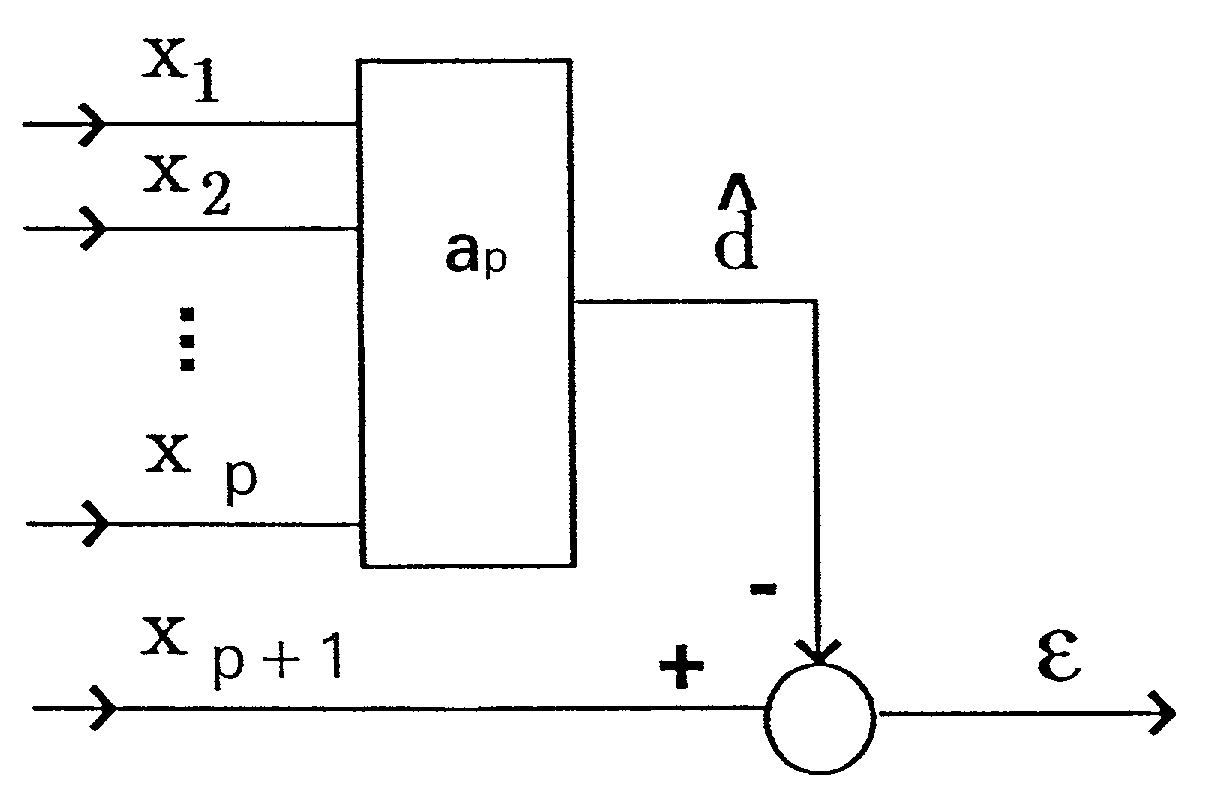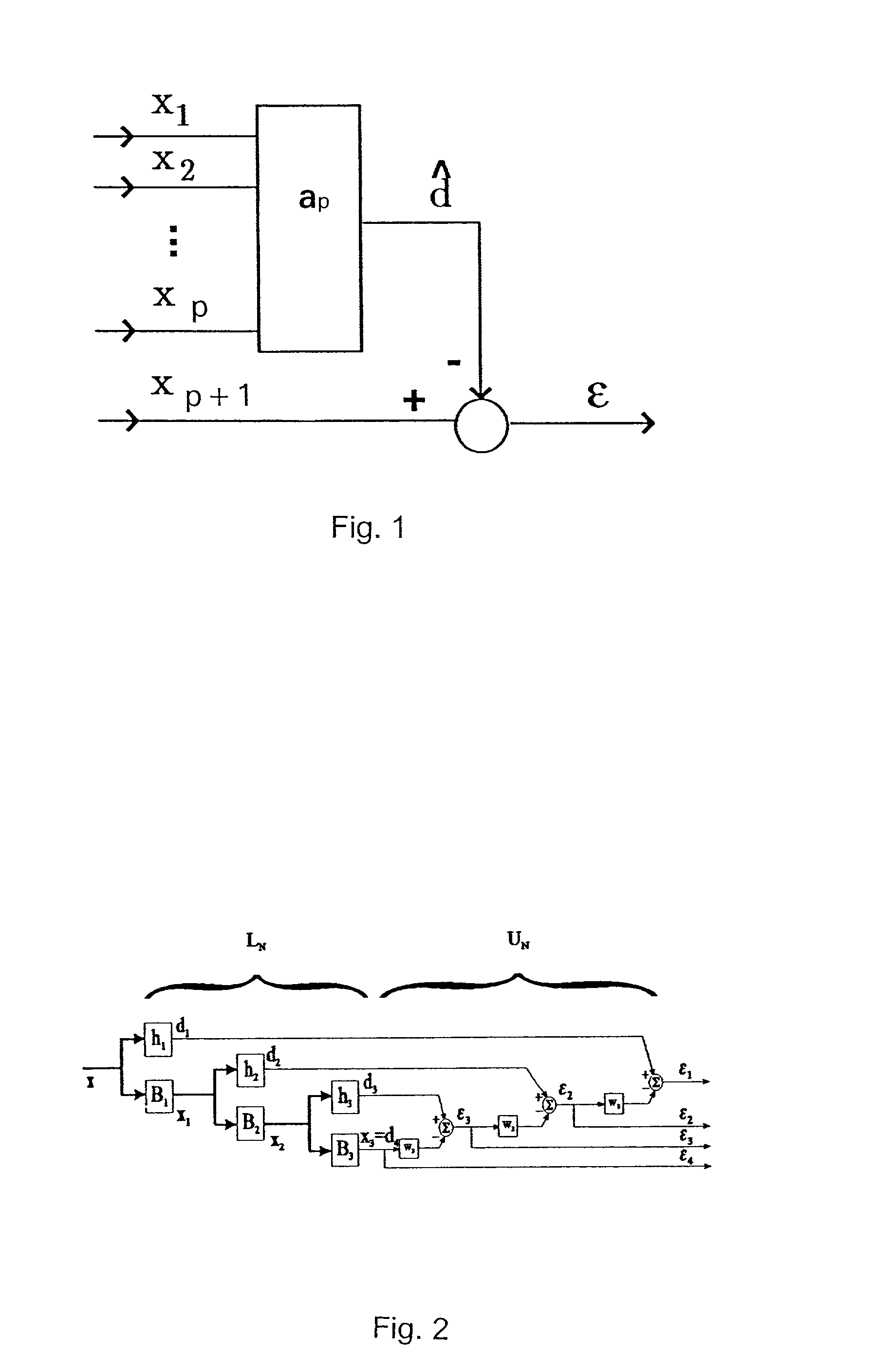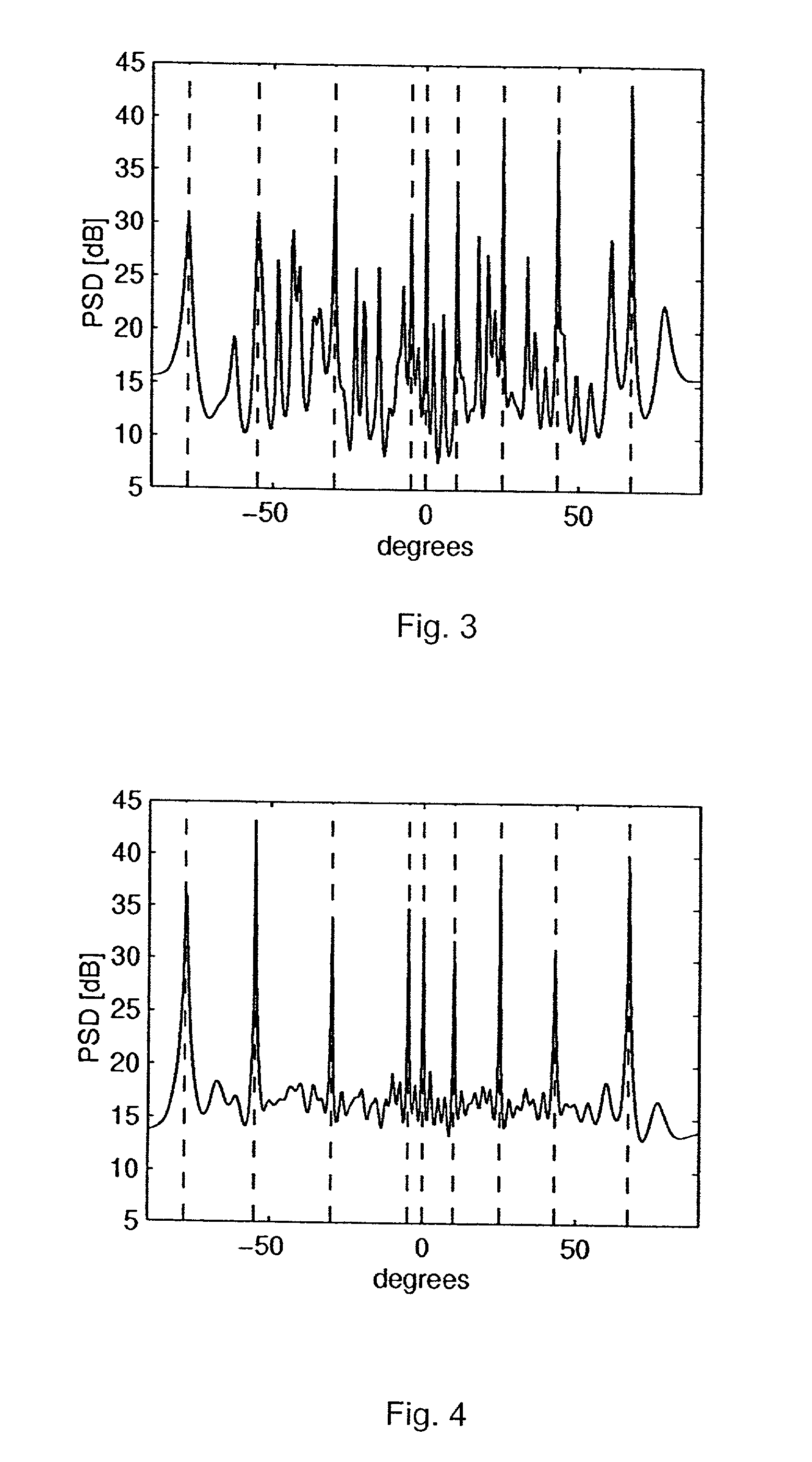System and method for linear prediction
a linear prediction and system technology, applied in the field of linear prediction system and method, can solve the problems of greater delay, difficult task of transmitting to a mobile user over a time-varying multipath, and spectral estimation, so as to minimize the mutual data point, and minimize the mean square error
- Summary
- Abstract
- Description
- Claims
- Application Information
AI Technical Summary
Benefits of technology
Problems solved by technology
Method used
Image
Examples
example 1
[0072]A plane wave impinging on a 50 element uniform line array (ULA). The array elements are spaced at half wavelength intervals and the angles of arrival are randomly selected from a non-repeating uniform distribution over the set of all resolvable angles, ranging from −90 degrees to 90 degrees. The signal-to-noise ratio (SNR) is 2 dB per element. Nine signals impinge upon the array from different angles. 100 snapshots are taken. The spectra generated by each of these algorithms are run through a detector that estimates the threshold for each spectrum. Any peaks above a certain threshold are considered detected. If any of these detected angles do not correspond to one of the original arrival angles, it is counted as a false alarm. If a true angle is not detected, it is counted as a miss. The PD and FAR are calculated and averaged over 500 trials. The performance as a function of rank is calculated with a sample covariance of 2 N samples.
[0073]Performance as a function of rank: A f...
example 2
[0075]In this simulation, differing signal quantities (10, 15 and 20 signals) impinge on a 50 element ULA at 0 dB SNR. FIG. 7a shows the RR-AR method's robustness to rank selection in the sense that its PD will meet or exceed the PD of FR-AR at almost any rank, regardless of how many signals are present. (Note that the FR-AR performance corresponds to the RR-AR performance at rank 50.) The signal dependent PC-AR method, shown in FIG. 7b, has similar peak performance but requires a subspace rank greater than or equal to the signal rank before good results are achieved. Further examination of FIG. 7a reveals that the peak PD for the RR-AR method is nearly invariant to the signal rank. In other words, selecting one low subspace rank will yield excellent PD for a wide range of frequencies present. This is in direct contrast to signal dependent PC-AR, where the peak PD as a function of subspace rank is directly tied to the number of spatial frequencies. The near invariance of the RR-AR m...
example 3
[0076]Performance as a function of SNR: To illustrate relative performance in low SNR environments, the simulation processes twenty signals received by a 50 element ULA. FIG. 8a–8c are plots of PD versus rank at different signal to noise ratios. As can be seen, FR-AR suffers greater degradation in PD in conditions of decreased SNR compared to the peak performances of signal dependent PC-AR and RR-AR. The same trends occur with FAR. These plots highlight the ability of reduced rank algorithms to focus on a subspace that captures the signal information while excluding a large portion of the noise, leading to enhanced PD and FAR. It is interesting to note that the RR-AR lower ranked subspace and the PC-AR higher rank subspace achieve roughly the same PD and FAR for the spatial frequencies used in the simulation. This may indicate that the relationship between a lower ranked subspace and a lower FAR is not as direct when the subspace rank is compressed below the signal rank.
[0077]Perfor...
PUM
 Login to View More
Login to View More Abstract
Description
Claims
Application Information
 Login to View More
Login to View More - R&D
- Intellectual Property
- Life Sciences
- Materials
- Tech Scout
- Unparalleled Data Quality
- Higher Quality Content
- 60% Fewer Hallucinations
Browse by: Latest US Patents, China's latest patents, Technical Efficacy Thesaurus, Application Domain, Technology Topic, Popular Technical Reports.
© 2025 PatSnap. All rights reserved.Legal|Privacy policy|Modern Slavery Act Transparency Statement|Sitemap|About US| Contact US: help@patsnap.com



